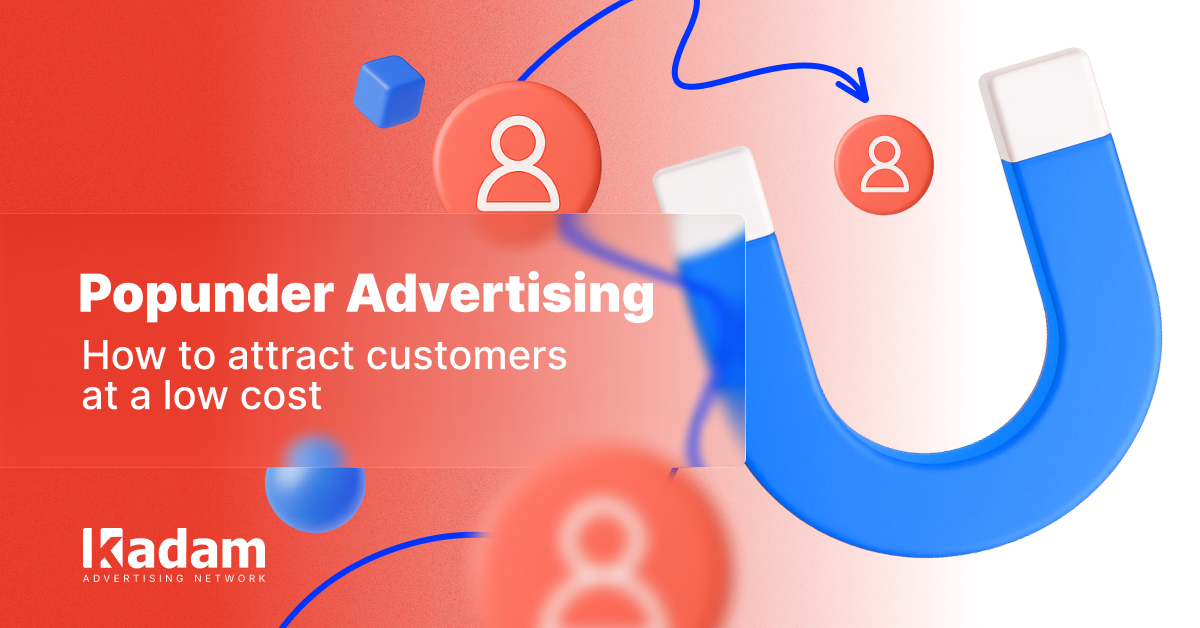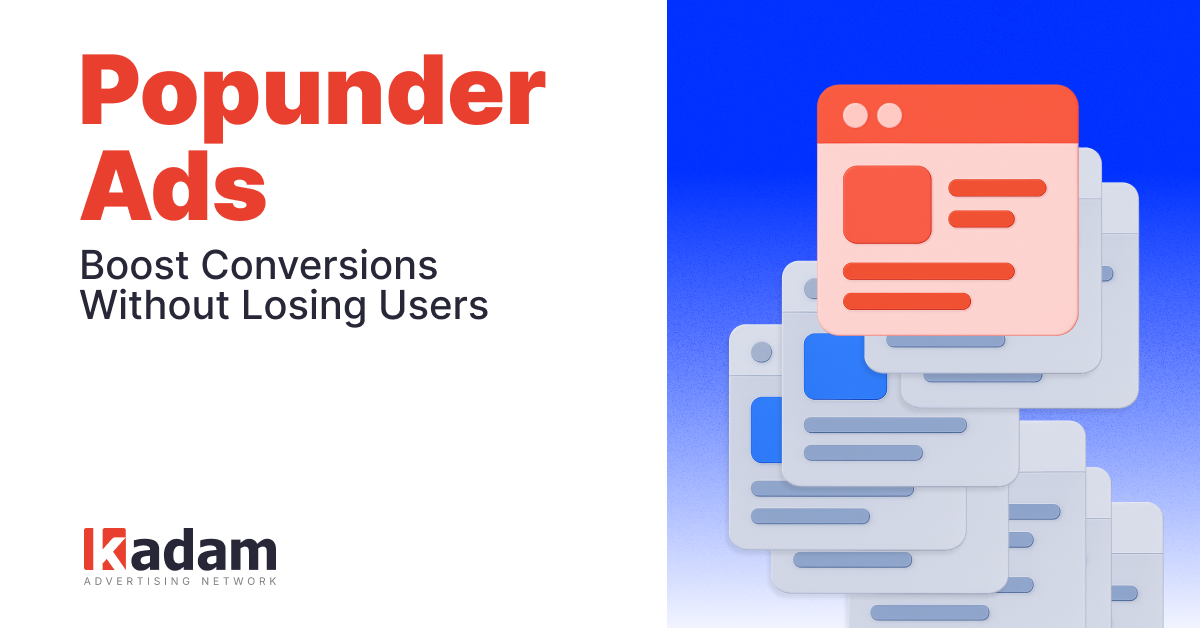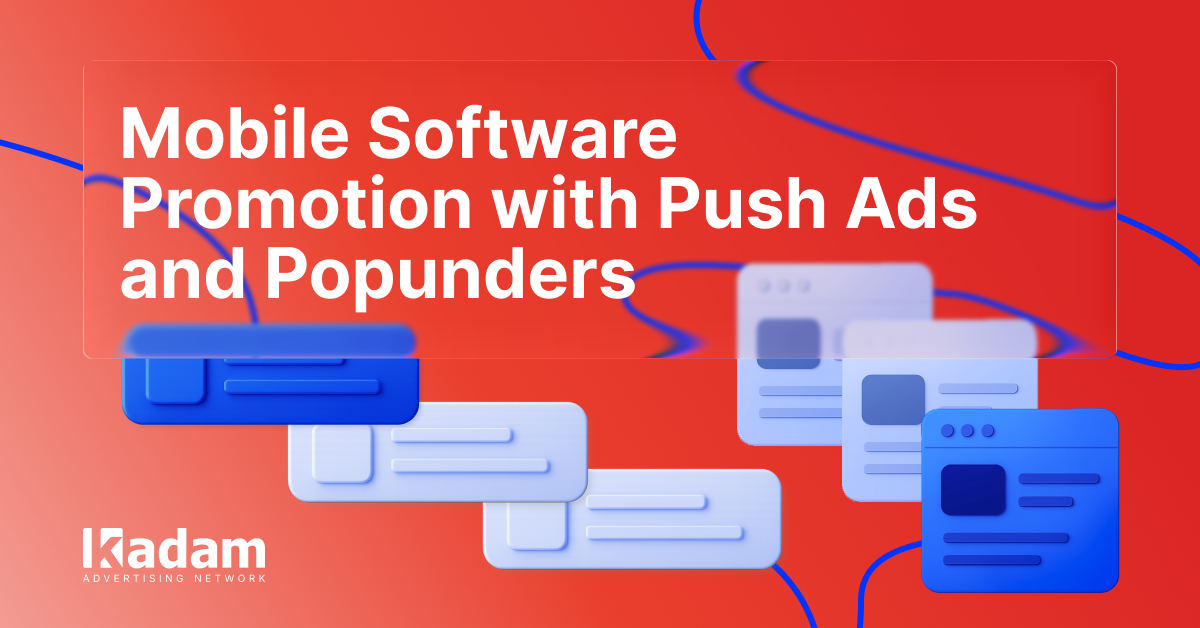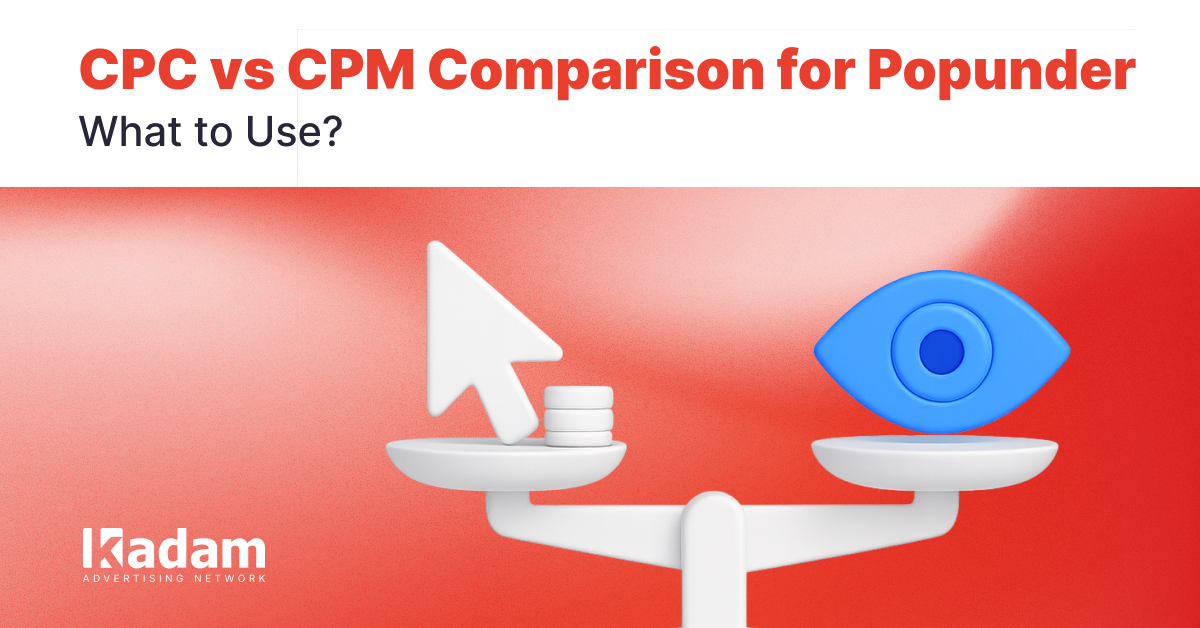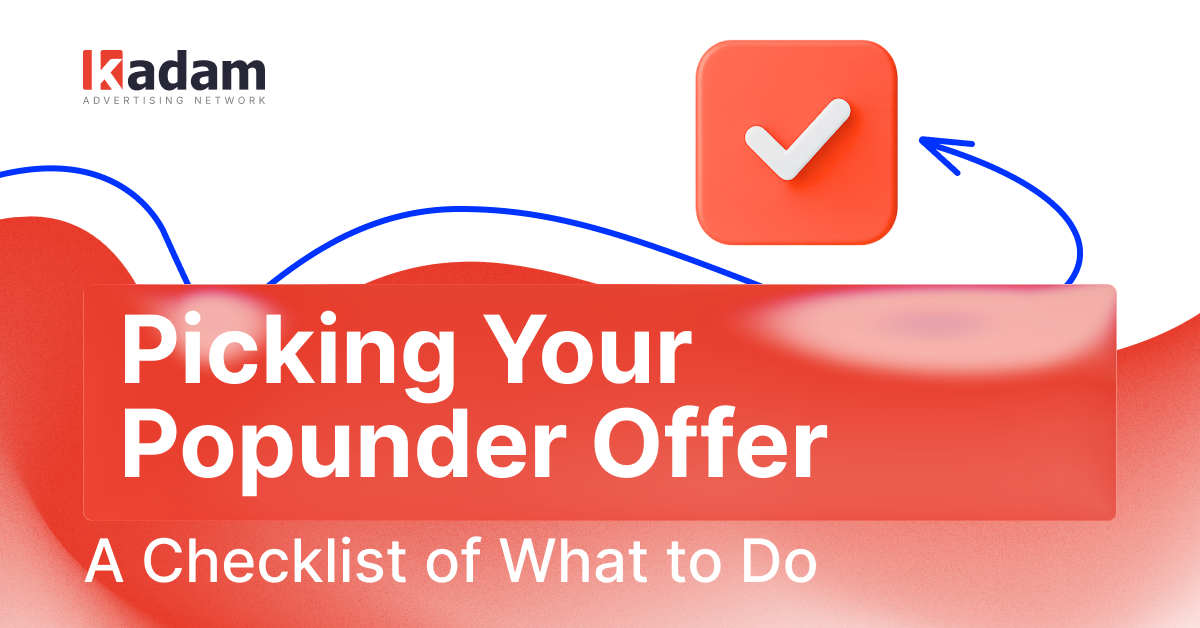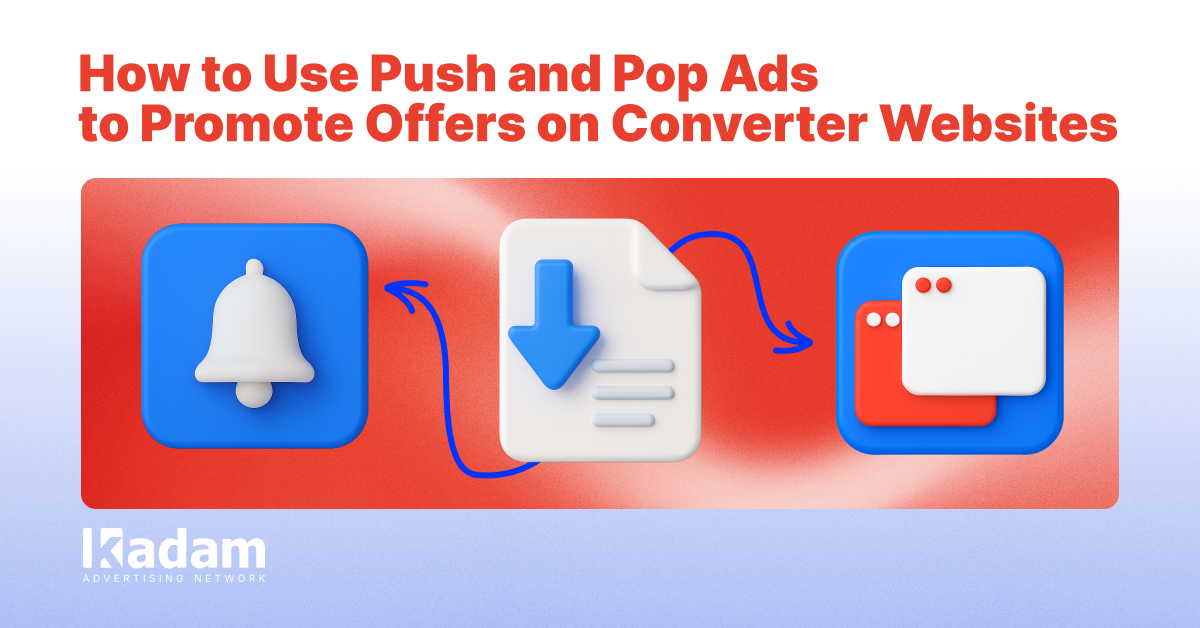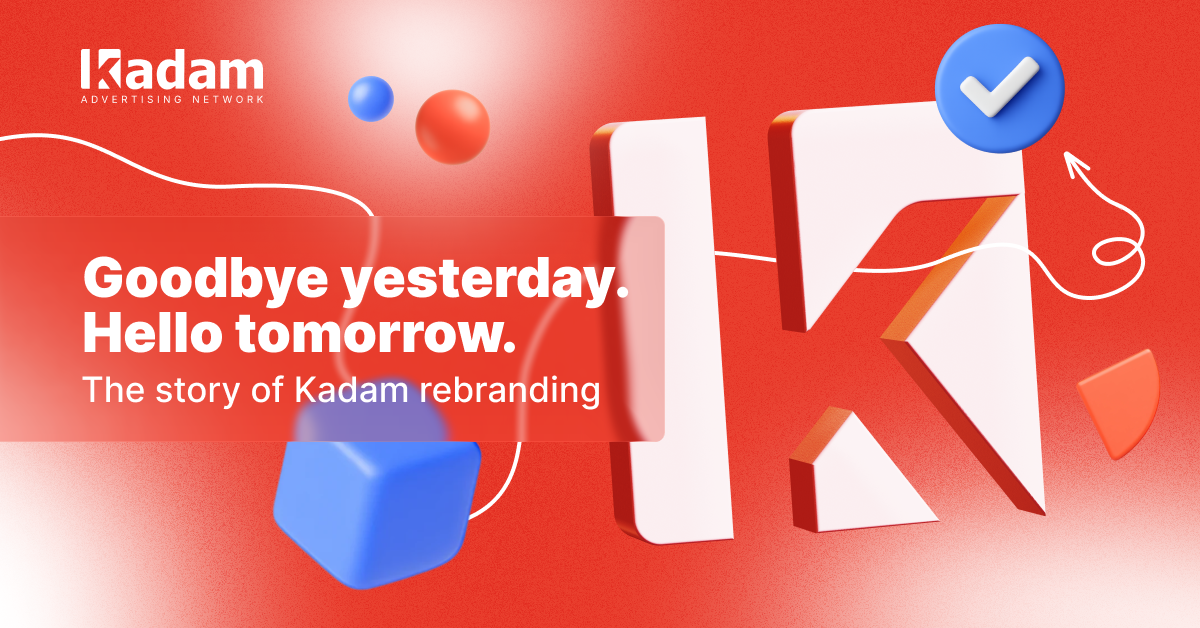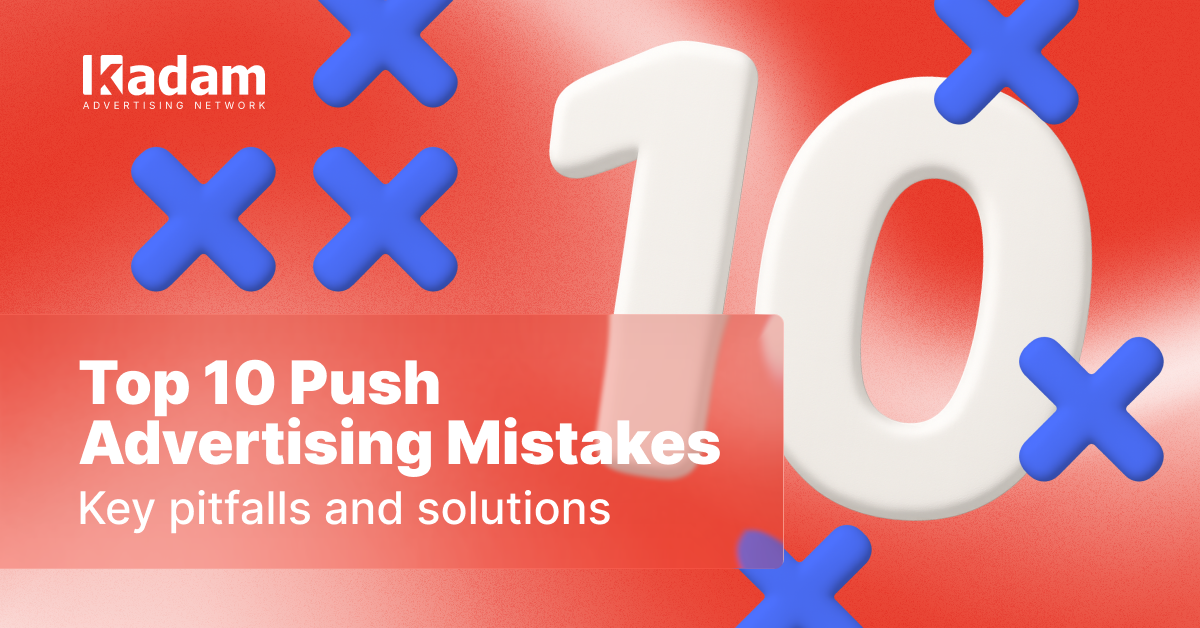
Top 10 Push Advertising Mistakes and How to Avoid Them
Using push ads remains a vital affiliate marketing strategy in 2025, but there are a number of mistakes you should be careful to avoid in order to make the most of it. In this article, we’ll break down ten of the most commonly encountered push advertising errors and explain how to avoid them.
16 Sep 2025
Using push ads remains a vital affiliate marketing strategy in 2025, but there are a number of mistakes you should be careful to avoid in order to make the most of it. In this article, we’ll break down ten of the most commonly encountered push advertising errors and explain how to avoid them.
How Push Advertising Mistakes Can Ruin Your Campaign
One little mistake might seem insignificant, but the truth is that repeated errors compound over time, resulting in wasted ad spend and low CTR (click-through rate). Proactive optimization strategies can help you steer clear of such pitfalls.
Mistake 1: Not Utilizing Audience Segmentation
Audience segmentation can help you gain clear, actionable insight into your core demographic. Unfortunately, not everyone uses it to its full potential.
Targeting Everyone Means Targeting No One
If you make your marketing message too broad, it’s unlikely to capture the attention of anyone, resulting in a diluted budget and decreased CTR.
Fixing Audience Segmentation
Segmenting by GEO, device, OS, and consumer behavior can help you craft targeted creatives optimized for the best results. You can also use a range of trackers and targeting tools to see what’s working and what isn’t, making it easier to improve your campaign’s relevancy.
Mistake 2: Using Low-Quality Ad Creatives
The effort a company puts into its creative reflects not only on the brand itself but also its relationship with prospective and existing clients. Remember, first impressions are the most important!
Common Creative Design Issues
Generic text, blurry icons, and misleading content are all common mistakes that drive away web traffic and stifle lead generation.
Best Practices for Push Creatives
To ensure the best possible results from your marketing efforts, design push creatives with clear icons, short copy text, and attention-grabbing CTAs. You can compare the performance of a couple of different creatives with A/B testing for further insights.
Mistake 3: Not Targeting Devices and Browsers
When in the campaign setup phase, don’t make the mistake of applying a one-size-fits-all approach to push ads. Rather, cater to different devices, operating systems, and browsers.
Why OS and Device Type Matter
Different operating systems handle push notifications in different ways, so it’s good to tailor your approach. Additionally, users on various devices have distinct behaviors and usage patterns; you might find that you’re able to convert more with mobile traffic than from desktop browsers.
How to Optimize Campaigns by Browser Type
To optimize advertising campaigns according to browser type, focus your energies on top-performing engines, adjusting creatives and landing pages to cater to them.
Mistake 4: Setting Unrealistic Bids and Budgets
Low bids can severely limit your campaign’s reach, whereas high bids might lead to you burning through cash without any real CTR increase. Setting a realistic budget at the start of your campaign can help you avoid these pitfalls.
How Budget Affects CPC and CPM Results
Placing low CPC bids results in fewer clicks and impressions, while low CPM bids result in poor visibility due to low-quality ad placements. On the other hand, high CPC and CPM bids can both lead to you losing money if you don’t have a good conversion rate, since you pay for clicks and impressions rather than results.
Balancing Budget Allocation
Conducting thorough testing and scaling your advertising campaigns gradually can help you allocate your resources more effectively and is a must for successful digital marketing.
Mistake 5: Forgetting Frequency Caps
Frequency capping limits the number of times a specific ad is shown to a given visitor within a specified period. Though often overlooked, it is crucial for creating a positive user experience.
Push Ad Fatigue
Show a visitor the same ad too many times and it’s likely to lose its efficacy. Worse still, it could end up annoying the user and driving them away, leading not only to lower CTR but also potential blocking.
Determining Helpful Delivery Intervals
Test out various delivery intervals to find out what gets the best results. You can start with just one or two impressions per day and adjust as needed to improve performance.
Mistake 6: Neglecting to Test Landing Pages
A well-optimized landing page is absolutely essential in digital marketing; it helps draw in users and turn them into successful conversions. Regular testing ensures that your lander is performing at its best.
Importance of Landing Page Speed and Relevance
Slow or irrelevant landing pages are likely only to frustrate users and kill conversions. A good landing builder will help you fully optimize your site and keep your audience interested, improving CTR, engagement, and return on investment.
Driving Conversion Growth with A/B Testing
A/B or split testing allows you to compare headlines, visuals, and CTAs to find out which are the most effective. These insights will help you put together a high-converting landing page that operates well across numerous devices and operating systems.
Mistake 7: Not Paying Attention to Performance Metrics
To guide your advertising efforts in the right direction, you must pay attention to key performance metrics, like return on investment, CR, and CTR. These indicators signpost the way to success, letting you know what you’re doing right and where you could improve.
Important Key Indicators: CR, CTR, ROI
Three of the most important key indicators are:
- Conversion rate (CR): measures how many users complete a desired action on your site (e.g., a sale)
- Click-through rate (CTR): measures the number of clicks on an ad per number of impressions
- Return on investment (ROI): measures the profitability of an investment by comparing net income against initial cost
Taken together, these metrics help track the health and profitability of your campaign so you can identify bottlenecks and optimize marketing performance.
Improving Optimization with Trackers
Tracking software allows you to keep track of real-time performance and make whatever adjustments are necessary to ensure your campaign is successful.
Mistake 8: Neglecting GEO and Time Targeting
We’ve already touched on the importance of catering your advertising to your audience. GEO and time targeting are two important pieces to this particular puzzle, and you should take care not to overlook them.
How Regional Behavior Impacts Push Traffic
CTR differs widely between different GEOs, so you should always consider location when thinking about your target demographic. For example, developed Tier 1 countries are characterized by high incomes and well-established markets, whereas the developing countries in Tier 3 have lower incomes and are less competitive. Each tier thus requires a different approach to push monetization.
The Relevance of Time of Day to CTR
Peak engagement windows vary between regions and demographics. You should time push ads accordingly to ensure as many people as possible see your ad and click through.
Mistake 9: Not Implementing a Proper Strategy
In the USA, roughly a fifth of all businesses fail in the first year. To avoid meeting this fate yourself, make sure to plan and strategize at every step along the road, including in your marketing approach.
Using Smart Bidding Tips
Leveraging smart bidding strategies helps advertisers optimize budgets, avoid overspending, and scale campaigns more effectively. With automated adjustments based on real-time performance data, you can fine-tune bids for specific goals or audiences, ensuring higher efficiency and better ROI.
Knowing When to Scale or Stop a Campaign
You should only invest more money in an ad campaign if it shows a sustainable profit margin; otherwise, you might as well be throwing your money away. Be sure to regularly review return on investment thresholds, paying close attention to how they’ve performed over time.
Mistake 10: Neglecting Auditing
Checking creative rotation, analyzing recent performance trends, and keeping a wary eye out for signs of fraud are all necessary for maintaining a successful campaign. Ongoing audits help ensure you remain on track, preventing long-term budget leaks and sustaining those all-important key performance indicators.
And that concludes our list of the top 10 push advertising mistakes and how to avoid them! If you’d like additional support, our professional personal managers are here to help. Reach out today for a quote!
FAQ
What are the most frequently made push advertising mistakes?
Some of the most commonly encountered mistakes in push monetization include poor segmentation, low-quality creatives, and ignoring valuable data.
How do poor-quality creatives affect ad performance?
Poor-quality creatives often feel irrelevant to the viewer and, as a result, affect ad performance by lowering lead generation, CTR, and conversions.
Why is segmentation so important to push traffic?
Segmentation is important because it allows you to cater to your target demographic, focusing spend on audiences that actually convert.
How often should I test push ads and landing pages?
You should test ads and landers often; we’d recommend doing so at least once a week.
What metrics are important when driving push traffic?
Three of the most important metrics when optimizing push ads are conversion rates, click-through rates, and return on investment.








